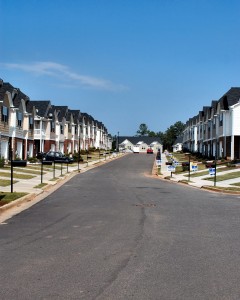
The Fed has predicted a bumpy plateau recovery in light of the deceleration of economic growth this spring and summer. In April 2012, it forecasted:
- 2.4-2.9% economic growth in 2012; and
- 2.7-3.1% economic growth in 2013.
The bank has since revised its forecast to:
- 1.9-2.4% economic growth in 2012; and
- 2.2-2.8% economic growth in 2013.
The Fed has recently announced it will take further action to boost the economy, and has predicted the following measures will be necessary until the labor market substantially improves, at least into 2015:
- purchasing more assets at a rate of $40 billion per month to force down interest rates and encourage investment;
- maintaining the Fed fund rates between zero and 0.25%; and
- continuing its policy of reinvesting principal payments from its holdings of agency debt and mortgage backed securities (MBS) into agency MBS.
Some Fed officials object to the proposed aid and caution such action could attack price stability and lead to greater long-term inflation. However, the majority of the Fed’s policy-making committee supported the action.
first tuesday insight
While the housing market is currently experiencing a lift, it will soon descend to join the rest of the disappointing economy. Why? Because the demand in today’s market is fed by an unsustainable flow of speculators, not end-user homeowners; because lenders are briefly making a killing off inflated interest rates; and because the unemployment level remains the same — proof that no significant change in the economy has taken place.
Today’s real estate market is floating temporarily on a swell of artificial growth. Home sales volume has increased due to high speculator involvement in the housing market. This demand will prove short-lived as no homeowners will step in to support continued demand when investors step off the scene. Lenders, too, appear to have their pallid cheeks infused with the color of more money as they charge higher real interest rates which they disguise as unbelievably low, but which are truly inflated from the current par rate.
Related article:
Right now, the market appears to be on a straight path of recovery. The case is not so simple.
The difference between a bumpy plateau and a straight decline is that a bumpy plateau has peaks — modest and brief, but momentary growth all the same. Unfortunately, this growth is not sustained; the direction of the economy quickly points downward after the rise. Because of this deceptive rise and fall, it is important to look not at fleeting economic fluctuations, but at the foundation of economic growth and predict the future by consulting the past.
The housing market will not fully recover until the economy recovers. The economy will not recover until job growth increases at a rate of about 350,000-400,000 annually. At this rate, California employment will catch-up to its pre-crisis level by 2016, not before.
Related articles:
Federal Reserve action has the power to stimulate the economy and push it on its way to recovery. Fears of hyperinflation resulting from further Fed interference are groundless since lenders now have an incentive to keep money on reserve with the central bank. Whenever inflation starts to creep up, all the Fed must do is pay higher interest on lender reserves to retain lender reserves and prevent further dissemination of new money — inflation. Thus, the Fed has a tight leash on inflation. Let’s hope QE3 is taking place soon enough to prevent injury, rather than just soon enough to repair it.
Related article:
Re: “Many at Fed Ready to Act if Growth Doesn’t Pick Up” from The New York Times


















